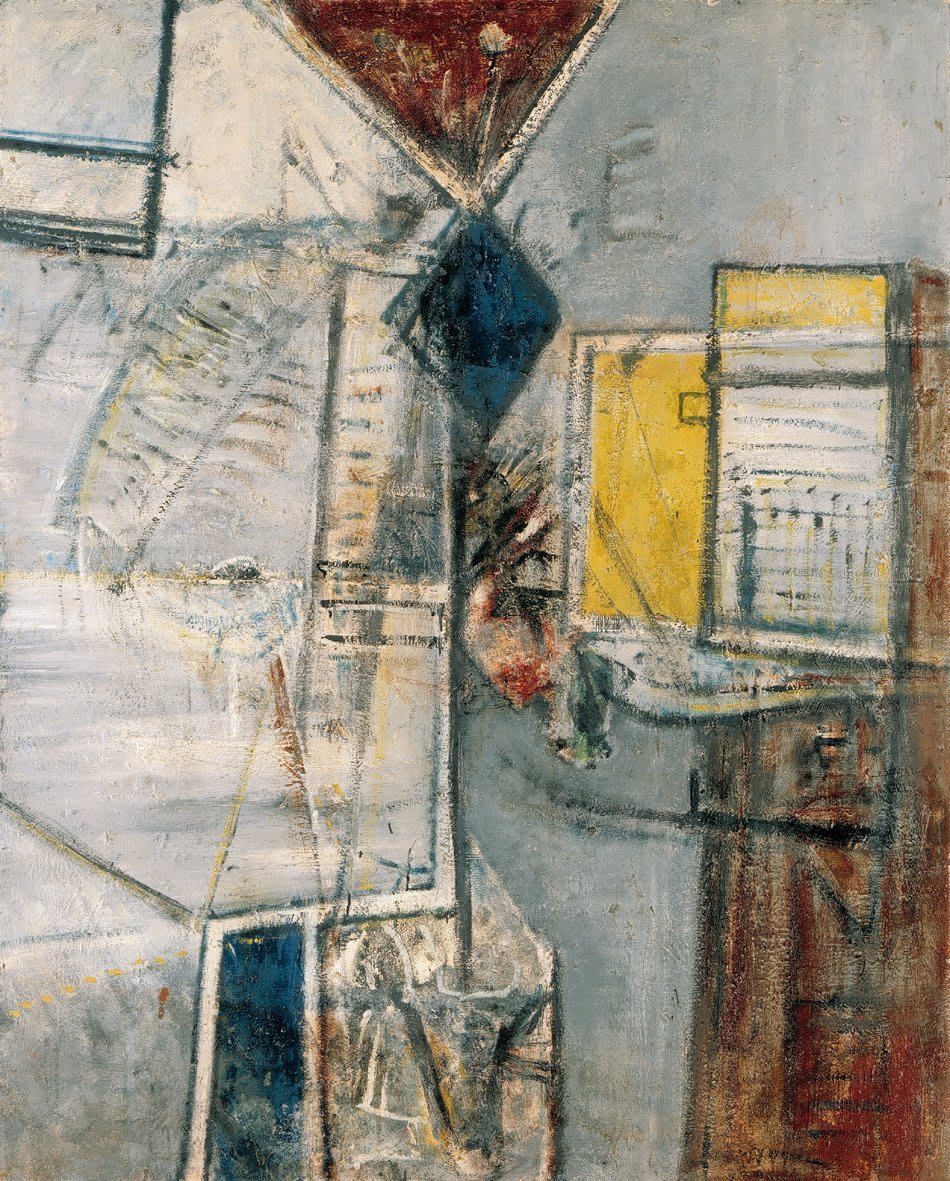Alan Davie 1920-2014
152.40 x 121.92 cms
Davie's paintings from the very early fifties are a rather sombre series which persistently suggest the corners of imaginary rooms. The walls are composed of enigmatic boxes and screens which look like apparatus for recording and controlling events taking place elsewhere, and he would seem to have woven an interest in science fiction into a highly personal sense of being on the threshold of unknown territory. He is perhaps here concerned with a problem of space which arises because he has a preconceived effect in mind. It is evident that he is keen to preserve the picture plane, but it is equally evident that he has created a moderate illusion of depth from which has arisen the atmosphere of premonition. This group of paintings now look like a series of sealed anterooms to his boundless inner sanctum.
At this point in his career Davie's painting could have gone quite logically in two or three different directions. These corners of rooms would have made superb settings for scarifying personnages in the manner of Francis Bacon or Graham Sutherland. On the other hand, Davie could have moved over into the 'flat space' of the Americans, agitating the picture surface with an abstract writing like Pollock, or covering it with sheets of colour as Rothko had done. Instead he took none of the paths which might have been predicted by the work of his peers. His canvases became swarming grounds for signs and symbols, the first of which - the diamond, the angry 'C' form - had first appeared in these brooding early interiors, in the guise of objects hanging undemonstatively from the walls. His later work apears much more impulsively executed as Davie's own private associations with these images and symbols came to drive his work. Towards the end of the fifties his palette was to become much broader and brighter than the muted colours seen here, and the compositional elements became increasingly discordant, more aesthetically comparable to Davie's other great passion: jazz music.
Adapted from an article by Robert Melville, which appeared in the journal Motif 7.
Provenance
The Artist
Gimpel Fils, London
Offer Waterman & Co
Private Collection, UK
Exhibitions
London, Hanover Gallery, Space in Colour, 7 July - 7 August 1953, cat no.1, exhibition curated by Patrick Heron
London, South London Art Gallery, Aspects of Contemporary Scottish Painting, The Art Exhibitions Bureau, March 1955, cat no.11, subsequently toured throughout Great Britain
Cardiff, Seven British Painters of Today, Arts Council of Great Britain Welsh Committee, July 1959, illus b/w, touring to:
Aberystwyth, August
Swansea, September
Literature
Robert Melville, Contemporary British Painters: Alan Davie, Motif No. 7, Shenval Press, 1961, illus b/w pl 12, p14
Alan Bowness (ed.), Alan Davie, Lund Humphries, London, 1967, cat no.69
Douglas Hall and Michael Tucker, Alan Davie, Lund Humphries, London, 1992, cat no.95
Join our mailing list
* denotes required fields
We will process the personal data you have supplied to communicate with you in accordance with our Privacy Policy. You can unsubscribe or change your preferences at any time by clicking the link in our emails.
